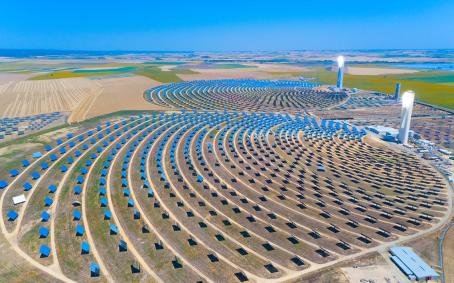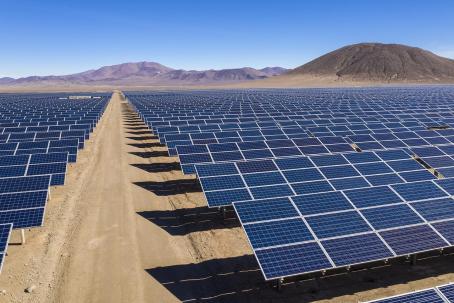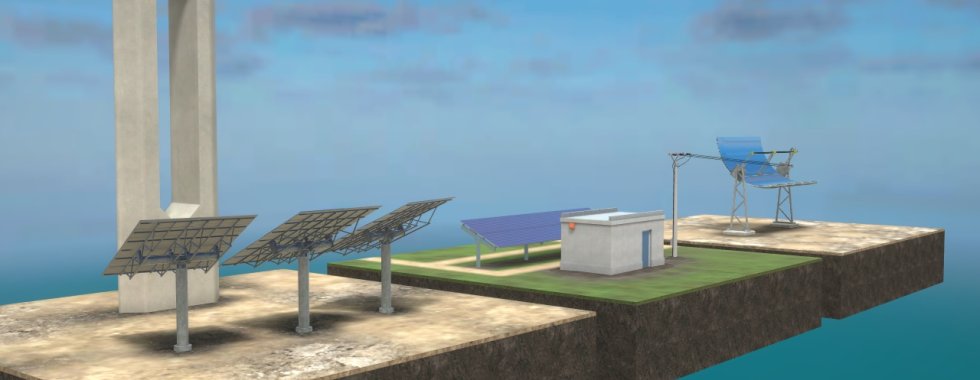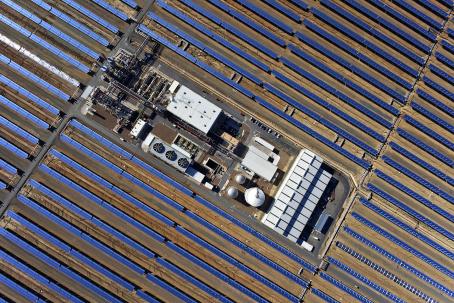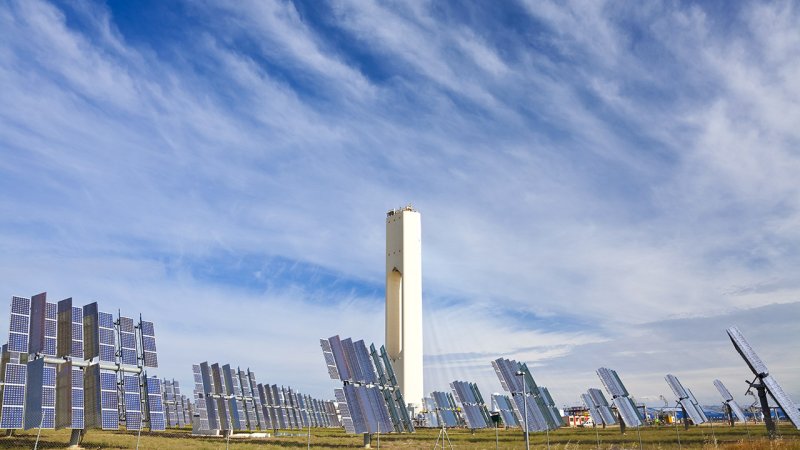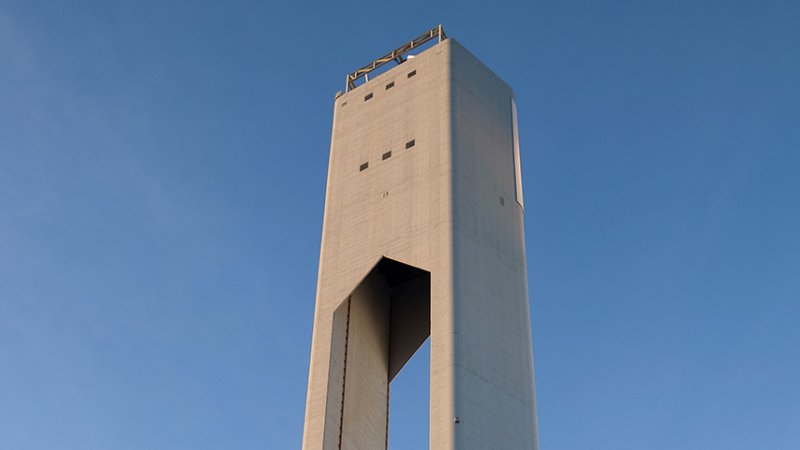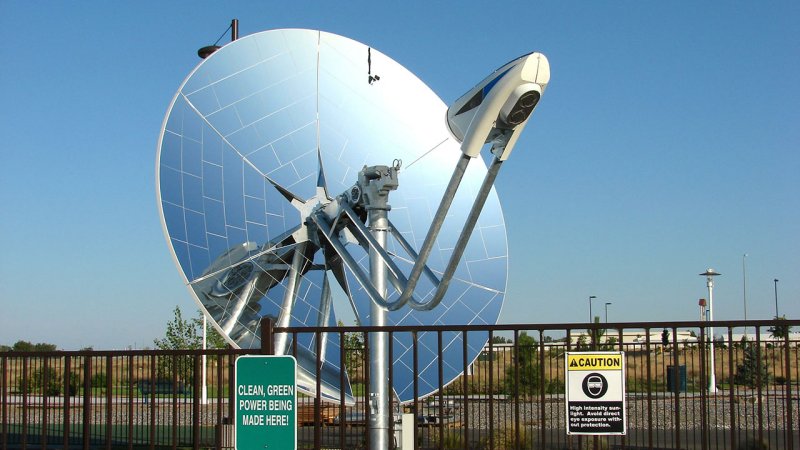
The Largest Solar Power Plants
5 min read
Electric Energy Production
An aerial view of the central tower solar power plant complex near the sunny city of Seville, Spain.
Regardless of the concentrated solar power technology used in a solar power plant, the result is the heating of a transfer medium to several hundreds of degrees Celsius. This energy needs to be converted into electricity. The most suitable system for this task is the steam turbine. The medium passes its energy to water in a heat exchanger. The water turns into superheated steam which drives a turbine in a conventional Rankine cycle. This system requires cooling that may not be easy to secure in desert regions. Trough-type power plants require 3,000 liters of water for each MWh which is comparable to a nuclear power plant. Central tower plants have lower water consumption and parabolic dishes are most often cooled by air.
Power plants are optimized to mean irradiation so they produce more heat than the turbine is able to handle in maximum irradiation conditions. Surplus heat is therefore stored in accumulators, which can be gravel, mineral oil or, most commonly, a mixture of molten salts. The accumulated heat is used later to power the turbine at night or in unfavourable weather conditions which makes concentrated solar power plants a source more stable than photovoltaic solar plants. Without an accumulator, a central tower solar power plant can supply energy to the grid 25% of the time in each year while with an accumulator, it can be up to 65% of that time.
All concentrated solar power plants are in fact hybrid. If there is not enough thermal energy from the sun, they burn natural gas or biomass. The produced heat is used either to power the turbine right away or to heat the accumulator.
In terms of grid requirements, there are four possible combinations:
- A power plant has a small accumulator and works only when the Sun shines. This energy is the cheapest.
- A power plant has a large accumulator and a medium output turbine. At the start of the day, it accumulates heat and in the afternoon it starts producing electricity and continues producing up to several hours after sunset, whereby it matches the demand in the grid.
- A power plant has a large accumulator and a low output turbine. It uninterruptedly produces a constant amount of energy. It is therefore a base load power plant.
- A power plant has a large accumulator and a very high output turbine. It only works for a few hours at a time. It is therefore a peak load power plant.
The Largest Thermal Solar Power Plants in the World
All of the largest thermal solar power plants are the parabolic trough collector type of farms. First is the SEGS (Solar Energy Generating System) power plant in the Mohave Desert in California with a total 354 MW of installed capacity. This is approximately the same output as the next three top plants combined. These are the Solnova, Andasol and Extresol in Spain with installed capacities of 150 MW, 100 MW and 100 MW respectively. Fifth is the Martin Next Generation Solar Energy Center power plant which also supplies heat produced in its solar collectors to the cycle of the largest fossil thermal power plant in the USA, the Martin County Power Plant in Florida.
The largest central tower power plant is the PS 20 in Spain with its 20 MW. It is 14th in the chart.
The Largest Thermal Solar Power Plant in the World
| Name | Output | Place Location | Technology | Note Comment |
|---|---|---|---|---|
| Solar Energy Generating System | 354 MW | California, USA | Trough | 936,384 mirrors, 6.5 km2 |
| Solnova | 150 MW | Seville, Spain | Trough | Secondary fuel — natural gas |
| Andasol | 100 MW | Granada, Spain | Trough | 1,080 collector batches, 7.5 hour thermal accumulator |
| Extresol | 100 MW | Torre de Miguel, Spain | Trough | 1,248 solar collector batches |
| Martin NGSE Center | 75 MW | Florida, USA | Trough | Part of a large fossil thermal power plant, app. 190,000 mirrors |
| Nevada Solar One | 75 MW | Nevada, USA | Trough | 760 solar collector batches, 180,000 mirrors |
| Ibersol Ciudad Real | 50 MW | Puertollano, Spain | Trough | 352 solar collector batches |
| Alvarado I | 50 MW | Badajoz Spain | Trough | 768 solar collector batches |



